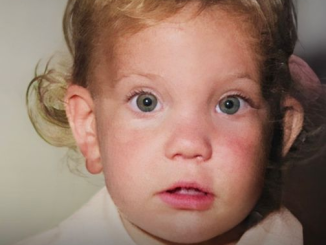After over 50 years in music, Dolly Parton is now a real rock star. The cherished country legend is finally putting out her long-awaited rock album called “Rockstar,” and she’s teaming up with some of the biggest names in music history to do it.

Dolly just released the latest single from her album, a cover of The Beatles’ timeless song “Let it Be.” Many have covered this beloved tune before, but this one is extra special because it features both living Beatles, Sirs Paul McCartney and Ringo Starr!
Few artists can bring together arguably the greatest band ever, but Dolly did it. Although Paul and Ringo have worked together occasionally, having them both on board is still a major achievement.

LONDON, ENGLAND – DECEMBER 12: Sir Ringo Starr and Sir Paul McCartney attend the Disney Original Documentary’s “If These Walls Could Sing” London Premiere at Abbey Road Studios on December 12, 2022 in London, England. (Photo by David M. Benett/Dave Benett/Getty Images for Disney+)
And if having two Beatles wasn’t enough, the song also includes Peter Frampton on guitar and Mick Fleetwood on drums, making it a truly star-studded recording.
The spiritual, gospel-inspired song is a great match for the 77-year-old country icon, and Dolly gives it her all in her performance — have a listen:
The song has received praise from both critics and fans of Dolly Parton and The Beatles.
One YouTube comment reads, “I got goosebumps from the first few words… by halfway through I was in tears! Thank you, Dolly, Paul, Ringo, and everyone involved in this incredible recording!”
Another comment says, “Great version of an iconic song by the legends themselves! A lively and powerful rendition. Thanks to all!!”
And another emotional comment reads, “No words… just tears… amazing… so much gratitude to these incredible legends for bringing this inspiring piece to a new generation. ‘Let it Be’ is exactly what this world needs right now.”

Blueee77 / Shutterstock.com
“Let it Be,” first released in 1970, remains one of the Beatles’ most cherished and inspiring songs. Although credited to Lennon-McCartney, Paul McCartney wrote it after dreaming about his mother, Mary Patricia McCartney, who passed away when he was 14.
Recorded during the band’s famous yet turbulent “Get Back” sessions, it served as the Beatles’ final single before their breakup in 1970. The song also lent its name to their last album, adding a bittersweet connection to the band’s farewell.
Dolly Parton’s album, Rockstar, is set to be released on November 17. She first hinted at making a rock album last year when she turned down her nomination to the Rock and Roll Hall of Fame. Dolly said she hadn’t “earned the right” to be inducted because she hadn’t made a rock & roll album yet.
“I hope the Rock & Roll Hall of Fame will understand and consider me again if I ever deserve it,” she wrote. “This has inspired me to finally make a rock ‘n’ roll album, which I’ve always wanted to do!” She also mentioned that her husband is a “total rock ‘n’ roll fan.”

Rockstar will have some new songs written by Dolly, but mostly it features covers of classic rock songs, often with the original artists joining in.
The track list includes:
- “Every Breath You Take” featuring Sting
- “Baby, I Love Your Way” with Peter Frampton
- “Heart of Glass” with Debbie Harry
- “Don’t Let the Sun Go Down on Me” with Elton John
- “Free Bird” with Lynyrd Skynyrd
Besides “Let It Be,” Dolly has released two other singles from the album: an original song called “World on Fire” and a cover of Queen’s “We Are the Champions”/“We Will Rock You,” which also promotes the 2024 Paris Olympics.
The Intriguing Experience of Pareidolia
Have you ever glanced at random objects and thought you saw faces? This curious occurrence is called pareidolia. Our brains are wired to identify shapes, patterns, and even sounds as something significant, often perceiving them as faces.
This explains why we might spot animals in clouds or faces in rocks. Even a worn tile floor, like the one in the image above, can reveal a subtle face when examined closely.
What is Pareidolia?
Pareidolia is a fascinating psychological and visual phenomenon where our brains detect familiar patterns, particularly faces, in everyday objects. This tendency comes from our evolutionary need to recognize friends, enemies, and others. Our brains are designed to identify faces, even when none are really there.

The Tile Face: A Closer Look
If you carefully study the image, you’ll see that the rough texture of the tile creates a face, complete with eyes, a nose, and a mouth. The “eyes” might appear as darker spots, the “nose” as a smudge, and the “mouth” as a faint curve. It’s as if the tile has turned into a hidden character, patiently waiting to be discovered. This instance of pareidolia transforms an ordinary tile into something mysterious, artistic, and perhaps a little eerie.
Why Do We See Faces?
Surprisingly, seeing faces in objects is more common than we realize. Throughout evolution, our brains have honed the skill of recognizing faces as a way to form social bonds and ensure survival. Detecting allies and recognizing threats was essential for early humans. As a result, our brains became finely tuned to notice even the smallest facial cues, sometimes even over-interpreting them.
Scientists suggest that this natural ability to see faces has influenced our emotional understanding, social interactions, and even our creativity. It shows the incredible capacity of the human brain to find meaning, even when it only exists in our imagination.
The Artistic Side of Pareidolia
Pareidolia is not just a scientific curiosity; it also has a captivating artistic aspect. Artists have long been inspired by hidden images in the environment. This type of art encourages us to see beyond the obvious and find beauty in the unexpected.
The face in the tile from the image above can be seen as a natural work of art, a masterpiece shaped by time, wear, and our imagination. It reminds us that art can be found anywhere if we just take the time to look.
In Conclusion
The next time you see a tiled floor, gaze at cloud-filled skies, or closely inspect a textured surface, take a moment to observe. You might just find a face staring back at you. Pareidolia reminds us how our brains interpret the world, revealing wonder in the most ordinary things. These moments of recognition are small reminders of the magic hidden in everyday life. So go out there and embrace the beauty of pareidolia!



Leave a Reply